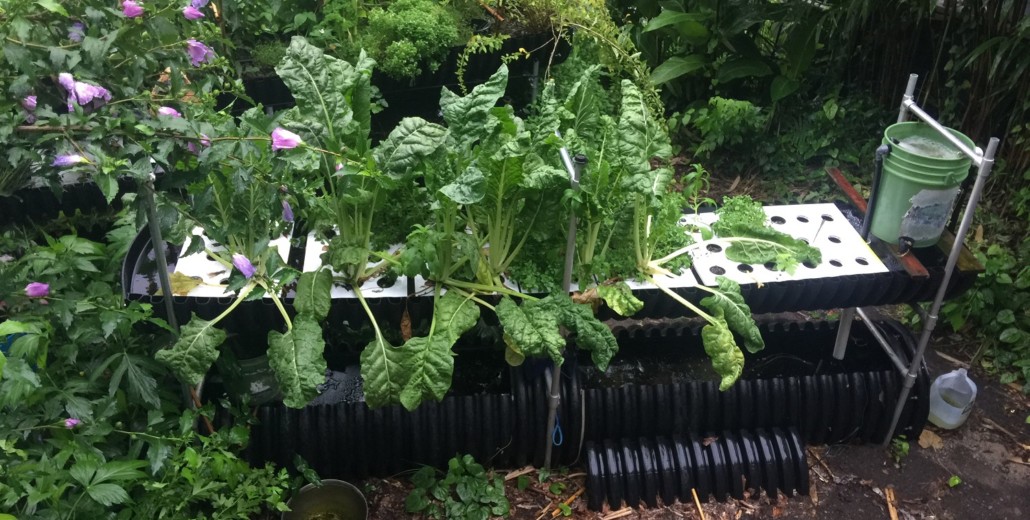When growing heavy feeding plants in a 15′ square foot Biogarden bed, at peak season, I will use 1-1.5 gallons of a liquid fertilizer daily, derived from the biomass blends we formulated (Primordial Soup).
Being vertical and stand alone beds, the plants are able to grow over an area exceeding in many cases 100′ sq ft. In a more constrained area, less fertilizer liquid would be needed.
For 800 sq ft, it is safe to say that your total plant needs would be closer to 40-60 gallons per day. Our 20′ Biogarden will produce 600 gallons of plant fertilizer ever 7-14 days. It takes 1 lb of our Primordial Soup to make 3 gallons of suitably concentrated liquid fertilizer.
When I grow heavy feeding plants in a 15′ square foot Biogarden bed, at peak season, I’ll use 1-1.5 gallons of a liquid fertilizer daily, derived from the biomass blends we formulated (Primordial Soup). Being vertical and stand alone beds, the plants are able to grow over an area exceeding in many cases 100′ sq ft. In a more constrained area, less fertilizer liquid would be needed. For 800 sq ft, it is safe to say that your total plant needs would be closer to 40-60 gallons per day. Our 20′ Biogarden will produce 600 gallons of plant fertilizer ever 7-14 days. It takes 1 lb of our Primordial Soup to make 3 gallons of suitably concentrated liquid fertilizer.
Regarding fish – they do quite well on a balanced, high nitrogen blend (Green Up), and like plants they thrive on additional minerals and bone meal from time to time (Flower Blend, Mineral Blend). When organics are in solution at a higher concentration (less nutricycling time) the carbon rich compounds are perfect foods, whether they directly provide a consumable liquid (filter feeders) or upon conversion to other ‘fertile-pond’ edibles. Depending on tank design and size, plus use of biofiltration bags, these processed liquid nutrients will provide heaps of duckweed, algae, zooplankton, insect larvae and other organisms up and down the aquatic food chain. This is all that is needed by most filter feeding and suspension-feeding fish including tilapia, crawfish, shrimp, clams, goldfish, koi, grass carp, mollies all fish fry.
My experience is from growing in Biogarden and using the nutricycler with our biomass blends. Other systems can be set up as variations on this concept. Or we can help you with completed units or parts and pieces to make your own.
Filter feeding and suspension-feeding fish include such varieties as tilapia, crawfish, shrimp, clams, goldfish, koi, grass carp, mollies all fish fry. All of these fish thrive on a liquid diet derived from decomposing organic matter.
Fish do quite well on a balanced, high nitrogen blend (Green Up), and like plants they thrive on additional minerals and bone meal from time to time (Flower Blend, Mineral Blend). When organics are in solution at a higher concentration (less nutricycling time) the carbon rich compounds are perfect foods, whether they directly provide a consumable liquid (filter feeders) or upon conversion to other ‘fertile-pond’ edibles. Depending on tank design and size, plus use of biofiltration bags, these processed liquid nutrients will provide heaps of duckweed, algae, zooplankton, insect larvae and other organisms up and down the aquatic food chain. This is all that is needed by most filter feeding fish.
My experience is from growing in Biogarden and using the nutricycler with our biomass blends. Other systems can be set up as variations on this concept. Or we can help you with completed units or parts and pieces to make your own.

